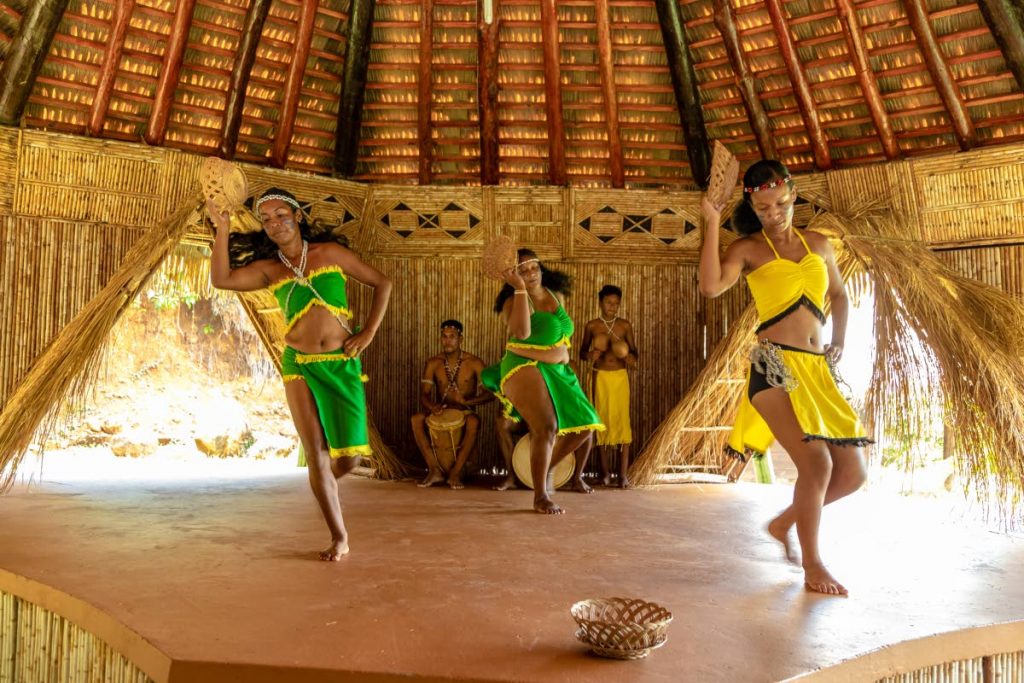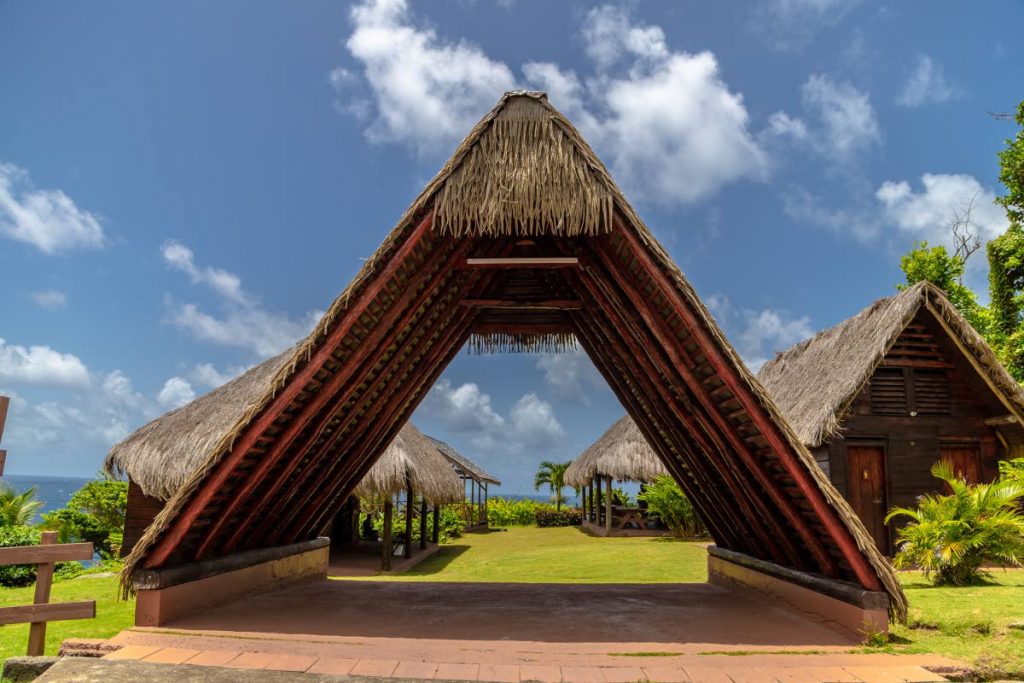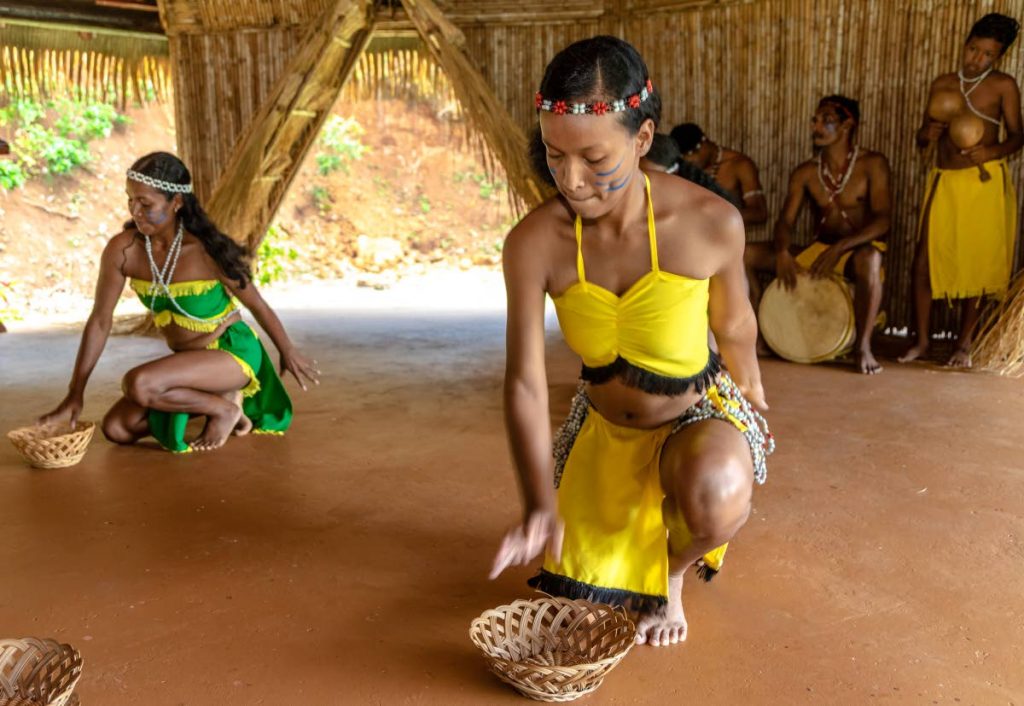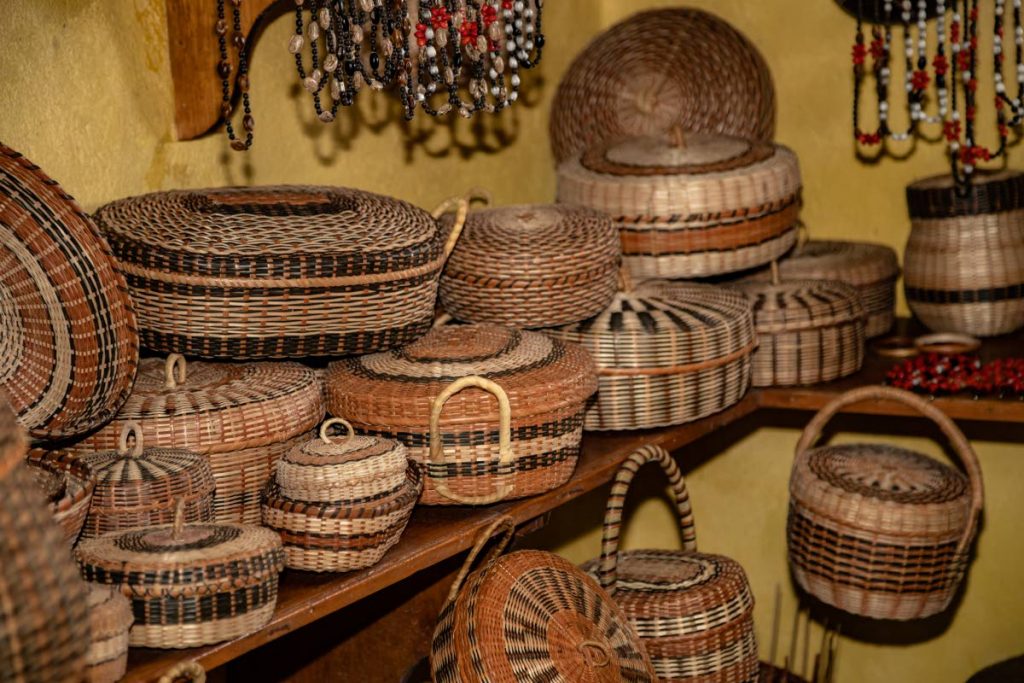The Kalinagos

When you think of Dominica, the first thing that might come to mind is the cascading waterfalls and greenery that covers the island's mountainsides – but hidden in plain sight are the descendants of it's first inhabitants whose traditions and customs persist to this day.
Kalinagos, originally referred to as Caribs, a term now considered derogatory, make up at least two per cent of the island's population and have assumed greater focus from the Dominican government over the past century. Beginning in 1903 with the establishment of their own territory under British Governor Sir Hesketh Bell, the first peoples have had a long journey in reclaiming their heritage by overcoming colonial era oppression and stereotyping.

Sunday Newsday visited the island on June 13 and spoke to Gweneth Frederick, manager of the Barana Aute Kalinago cultural centre, who said while some think that Kalinagos are extinct, they are alive and well.
"We would be a lot happier if more focus was placed primarily on this facility, because it was built to reflect what traditional Kalinago life used to be. We would like a lot more people to come through and experience this."
Historically, Dominica was one of the last untouched frontiers for European colonists in the Caribbean. Dissuaded by the absence of gold on the island, treacherous terrain and fierce Kalinago resistance, it was only in the 16th century that French merchants began trading with the indigenous peoples.

For decades after colonisation, the Kalinagos were considered insular and elusive, seldom seen outside of their reserve on the northeastern corner of the island, which gave rise to negative stereotyping, something Frederick says lingers even today.
Despite this, the mark left on the island by the Kalinagos is clear, as evidenced in the names of some places, including its capital, Roseau, which is the indigenous name of a river reed.
Dominica which was originally named Waitukubuli which means "tall she is" in the Kalinago language and is now the name given to the Caribbean's longest hiking trail which extends from the coast in Roseau to it's forested interior. The abbreviated version, the Kubuli is also the name of the island's most popular brand of beer. The beer which was originally brewed in Dominica, relocated to St Vincent and the Grenadines after its plant was destroyed after Hurricane Erika in 2015.
The island's main tourism agency, the Discover Dominica Authority (DDA), also uses the symbol of a woman's face against the mountainside as their official logo, something which is present in indigenous folklore.

Dominica is also one of the few islands in the Caribbean to establish a Ministry of Kalinago Affairs, which oversees activities and addresses the needs of the local Kalinago people on the island.
Despite having a significant cultural impact and greater representation at the government level, Frederick said native Dominicans want more autonomy and financial independence from Dominica's central government. Ironically enough, she says this independence would likely be possible only through greater assistance from the government.
While striving for greater international recognition and opening up to the outside world, the Kalinago community also has the challenge of relating their traditional cultural values to modern, progressive sensibilities, especially in relation to family life and inter-marrying in the village.

While Kalinago men were allowed to marry non-Kalinago women and bring them into the village, indigenous women faced more restrictions and would have to leave the village if they planned on marrying an outsider.
"The customs still persist but there have been changes in thinking, our tribal elections are slated for next month and it will be a historic one because we have our first female candidate going up as chief, so we do have a progressive mindset.
"This is how our people make their living. We have a lot of craft shops, a lot of them still go fishing, a lot of our young people go out and get government jobs, but we still have a lot of people who maintain the traditional way of life like fishing and so on.
Similar to the popular Airbnb platform which allows visitors to live as a native, Frederick said a similar programme called the Home Stay Programme was in operation at the territory which would allow visitors to experience a day in the life of a modern Kalinago.
However, Hurricane Maria's wrath in 2017 was felt even by the Kalinagos themselves as several of the homes that once accommodated tourists for the programme were destroyed.

Frederick said the Kalinago community in Dominica was also interested in forming relations and building a network with other indigenous organisations in the Caribbean, including Trinidad. She said recently they made contact with another indigenous group from Guadeloupe that shared similar linguistic patterns and believed they might be distant relatives.
While there has been an increased focus on the development of indigenous affairs and trade with the Kalinago's descendants, there is also a need to balance this increasing modernisation with the traditional customs that define them.
Whatever the outcome of this struggle, Dominica's indigenous people want the Caribbean to remember they are still here to stay.


Comments
"The Kalinagos"